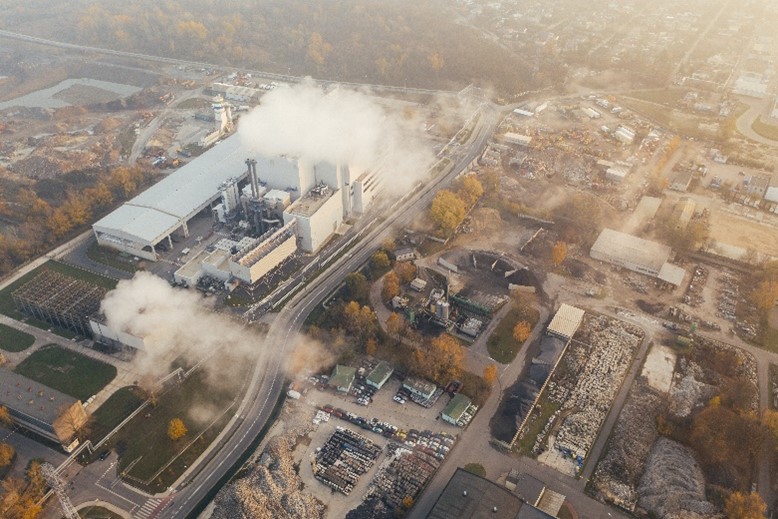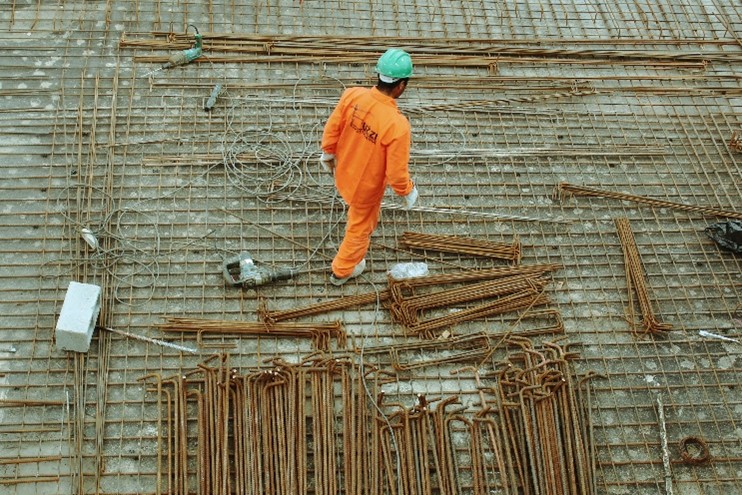The explosion of data and technology firms innovating, and disrupting, across the built and natural environment has given rise to a plethora of terms, some familiar, some lesser known, and some that were first defined in other sectors but are now merging with and impacting our sector. In addition to the familiar term of PropTech, we already have ConTech for construction, PlanTech for planning, LandTech for land, CRETech for commercial real estate, InfraTech for infrastructure, UrbanTech for smart cities, and crossover terms such as FinTech, LawTech, InsurTech, RegTech and SupTech which respectively address finance, law, insurance, and regulatory compliance and supervision.
With the events of 2022 giving us drought, floods, heatwaves, wildfires, and a crisis in global energy and food markets, the emergence of the term Climate Tech is perhaps only fitting, given the existential threat that climate change is increasingly seen to represent to policy makers, private and public sector organisations, and more critically, individuals themselves across society.
So how should we define Climate Tech, and how should the built and natural environment profession embrace and adopt the technologies available now and those under development? Ben Soltoff of Yale1 provides a useful definition for us:
‘The term “climate tech” intentionally casts a wide net. It includes both physical and digital technologies. It includes technologies that reduce greenhouse gas emissions, technologies that remove emissions from the atmosphere, and technologies that enable adaptation to an altered climate. If a technology has something to do with solving any aspect of the complex and multi-faceted problem of climate change, then it can conceivably be considered climate tech. This all-inclusive focus acknowledges the breadth of the climate challenge and the diversity of solutions needed, but it also allows for a certain looseness when startups, investors, and others seek to define their impact.’

The wide net that Yale’s definition casts, allows our sector to focus on every part of the property and asset lifecycle, to consider a wide range of asset types, whether land, residential, commercial, alternative, or infrastructure, and to look at these assets at an individual, community, city, region, and national scale. Whilst the definition includes the reduction and removal of carbon emissions, together with measures to adapt to climate change, for this discussion, I will focus on how built and natural environment professionals can use data and technology to affect meaningful reductions in emissions to support the journey towards net zero.
I will return to the topic of adaptation in future content and examine how the sector can mitigate the inevitable effects that we are already seeing and will unfortunately only become even more severe until such time that current emissions are reduced, and historical emissions removed from the atmosphere.
The infrastructure sector will play a key role in deploying at scale, approaches such as carbon capture and storage/sequestration, direct air capture, and other forms of negative emission technology. And with methods for negative emissions including many land-use approaches such as afforestation, reforestation, bio sequestration, agricultural practices, and wetland restoration, the impact of the profession on how land is used and managed presents a huge opportunity.
There is an understandable reticence to place reliance on both adaptation and negative emissions at the expense of effort and investment in achieving sustainable reductions in emissions, but a combination of all three approaches will be employed over the coming years.
Whilst carbon is not the only harmful greenhouse gas, it represents 75% of the total, with additional harmful effects from methane, nitrous oxide, and a range of fluorinated gases such as hydrofluorocarbons. Real estate itself is carbon intensive and contributes approximately 40% of global greenhouse gases2
1 https://www.beyond-buzzwords.com/climate-tech
If we step through the land and property life cycle, we can demonstrate the opportunities for the profession to use data and technology, much of which is already available and being deployed, to support the critical net zero agenda.
However, before we progress through the life cycle itself, we must recognize that it must now be seen as a single, connected, whole, where emissions and costs are managed on a whole life basis. Decisions will need to be taken at every stage, by different disciplines working together, to consider the impact of embodied and operational emissions, to support material banks for the recycling and reuse of construction materials, and to ensure the resilience of assets to the effects of climate change that are already taking place and that will increase in frequency and intensity until meaningful reductions in atmospheric greenhouse gas levels are achieved.
The profession already has a standard, ICMS3, that supports the collection and reporting of data on a whole life basis including emissions and costs across the life cycle of the asset, together with related income and non-construction emissions and costs across land acquisition, occupancy and support, and externalities, such as carbon taxes and credits, pollution, waste etc.
Much of the initial focus needs to be on the consistent measurement of embodied and operational carbon emissions but there remains a lack of standards, tools, and databases to support this.
RICS has existing guidance which is being updated and added to around Whole Life Carbon Assessment for the Built Environment, Sustainability and ESG in commercial property valuation and strategic advice, is working with a number of organisations to develop the UK Net Zero Carbon Buildings Standard, and is creating a Building Carbon Database,.
A common theme across many, if not all, Climate Tech solutions is the use of big data, coupled with machine learning and other artificial intelligence approaches, to provide information upon which decisions can be made across different assets and at every scale from a single building to an entire continent.
Across the broader sustainability agenda, a recent RICS survey confirmed that digital tools are already being used for the following types of assessments, albeit only to a limit extent:
- Energy reduction
- Renewable energy options
- Minimising waste
- Indoor air quality
- Embodied carbon
- Building orientation and daylight analysis
- Reducing water needs
- Climate resilience and adaptability
- Impact on biodiversity

Land Use
Even before decisions are made on the potential impact development on greenfield and brownfield sites, the way land is used for agriculture, forestry, and flood management presents opportunities to reduce and capture emissions. Using satellite imagery and remote sensing techniques, Zulu Forest Sciences, analyse current land cover and historical land-use change to identify opportunities for potential reforestation and natural regeneration.
Planning and Development
Technology is already allowing multiple data sources to be aggregated and presented in powerful visual tools to support the review and selection of land for development. These tools now allow factors such as biodiversity, flood risk, and nitrate and phosphate zones to be part of the decision-making process alongside the more traditional data around planning protections, zoning, ownership, and restrictions. Addland, an RICS Tech Partner, is example of this powerful data aggregation approach.
Another RICS Tech Partner, MEGA OPTIMAL with the support of the European Space Agency’s Space Solutions, is developing a solution to provide data on land use choices addressing social issues such as heat islands in deprived areas.
Critical design and procurement decisions need to be taken at the outset to balance cost, and emissions over the full life cycle of assets with focus on choices of material, and the RICS Tech Partner, LifeProven, is already using this data driven approach to enhance the environmental performance of assets from the earliest design stages.
Finance
Real estate typically requires funding throughout the phases of development, construction, and ownership. Lenders and ESG fund managers need access to reliable and consistent emission and ESG data to assess ratings, make lending and debt pricing decisions, and to establish the validity of inclusion of projects within ESG and green bond portfolios.
The rise of green loans and sustainable lending, with bodies such as the Loan Market Association (LMA) providing guidance and documentation, is increasing the focus on asset owners to produce data on their assets predicted and actual performance, in addition to the use of certifications such as BREEAM, LEED, NABERS, together with RICS’ new International Building Operation Standard (IBOS).
Data platforms such as Envizi IBM captures data and produces rating for GRESB, ENERGY STAR and NABERS, and our RICS Tech Partner, eTool, employs life cycle assessment at the design stage to produce similar ratings for development projects.
To support risk management for residential mortgage lenders and insurers, another RICS Tech Partner, Property Risk Inspection, provides data around climate and other physical related risks.
As the externalities of carbon and its equivalents are increasingly converted into taxes and credits, data and technology firms such as perse are providing data platforms and marketplaces to measure, procure and manage energy and carbon costs across scope 1,2, and 3 emissions.
Construction and retrofit
Advances in material science provide potential for significant changes in the embodied carbon impact of materials such as concrete, mortar and cement. Adding graphene as an additive produces stronger construction materials reducing the amount of steel re-bar required and by reducing the clinker factor reduces the embodied carbon required and new steel plants based on green hydrogen are aiming to produce emission free steel.
Since most of the world’s building already exist, the sector must focus on effective retrofit interventions to reduce emissions and negate the need for demolition allowing existing assets to support the drive to net zero.
RICS Tech Partners BOOMPower and Absolar are both using data and technology to support the deployment of solar energy and battery projects, and IRT Surveys use thermal imaging to help make intelligent retrofit decisions.

Valuation
The impact on the value of assets based on their environmental performance and their climate resilience sends strong price signals to the market and will increasingly incentivise market participants to avoid the risk of stranded assets, and to maximise capital and rental values. RICS continues to provide guidance in this area and the valuation profession will need more data to support the valuation process. RICS Tech Partner, PLACEMAKE.IO, is aggregating multiple data sets and using artificial intelligence to produce energy efficiency and other locational data to support valuation and investment decisions.
Operations
Much of the current Climate Tech deployed across the built environment is understandably focused on managing and reporting emissions produced during the operational phase of built assets. Many RICS Tech Partners are focused on the data and technology required to deliver smarter more sustainable spaces, whether newly built, or existing stock in need of retrofitting. Through the installation of smart sensors and other connected devices linked to building management systems, key indicators of energy performance and other metrics can be managed to deliver comfortable, safe, flexible, productive, and sustainable spaces. Switched on Space, Demand Logic, Purrmetrix, Metrikus, and BuildingMinds are all examples of RICS Tech Partners already deploying solutions to optimise energy consumption and reduce emissions.
End-of-life
With built assets having design and operational lives measure in decades, when the time comes for either demolition, or hopefully refitting to extend their life, we need to understand the materials that have been used in their construction, and how best to recycle or reuse to minimise waste and to keep the embedded carbon within the property lifecycle. As we construct new assets it will not always be clear at the time how and best to reuse and recycle materials, so over extended timescales, we need a mechanism to store and retrieve data on the materials used and how they can be safely disassembled. Given the current building stock we also need to change our view and consider existing assets as material banks to support the circular economy and reduce the need for new materials to be produced, consumed, and create yet more embodied carbon.
Summary
Given the current sentiment levels highlighted in the metaprop Global PropTech Confidence Index it is worth mentioning, that talking to venture capital participants at a recent October 2022 conference, Climate Tech was seen as a ‘no brainer’ for continued investment – the desire for investment returns matching the nature of the existential threat of climate change and the role that the built and natural environment needs to play in reducing emissions.
So, whilst Climate Tech could be considered as another buzzword, it can play a critical role in focusing energy, innovation, investment, and activity on this critical issue for the whole built and natural environment on which we all depend.
Andrew Knight
Global Data and Tech Lead
Aaliyah Pollock
Data and Tech Analyst













